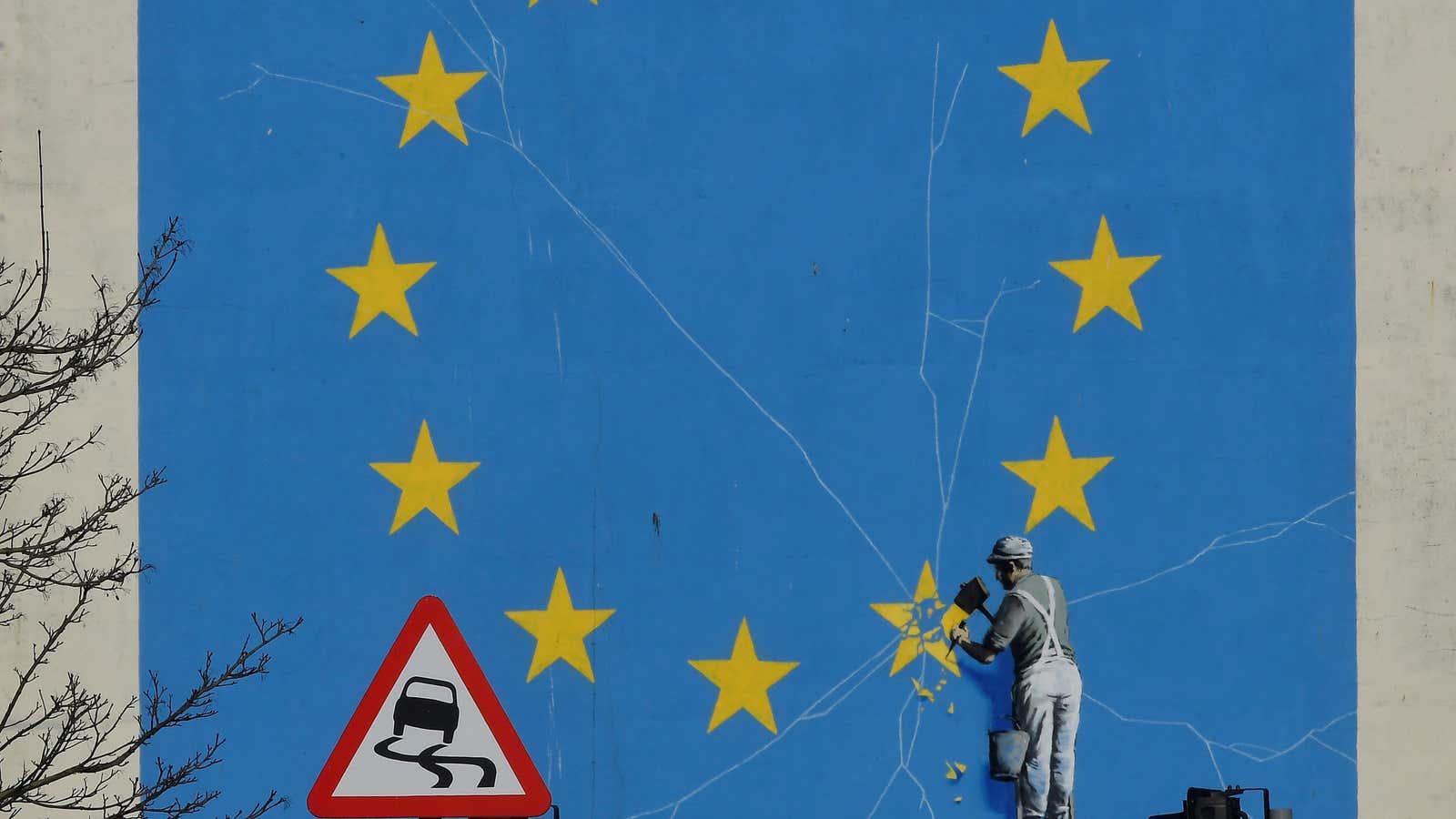Voters in the EU’s 28 member states, covering 512 million people, head to the polls this week to elect 751 MEPs in the ninth European Parliament. The turnout for parliamentary elections has declined in each consecutive election cycle, from a high of about 62% in 1979 to 43% in the last vote in 2014.
That trend may be bucked this year given the pressing issues that have come to grip Europe since 2014, including a general economic slowdown, migrant crisis, and rise in Euroskepticism. Here are key aspects about the vote you need to know:
Date of the vote
The Netherlands and the UK will kick off the in-person voting process on May 23, followed by Czech Republic and Ireland on the 24th, and Latvia, Malta, and Slovakia on the 25th. The remaining EU countries vote on the 26th.
What about the vote?
Things get tricky here. Each EU member state is free to set their own voting system, though all must follow some common practices, including a system of proportional representation to ensure the makeup of MEPs broadly reflects the vote tally.
Voters across the member states will cast their ballots (pdf) for parties, candidates, or both. In some countries, they only vote for a list that pools together various candidates, and in the case of closed lists they have no say in changing the order of candidates. Open list systems, however, allow voters to cast preferential ballots.
What about Europeans living outside their home country? Most member states allow their citizens to vote from abroad, but some do require citizens register beforehand with their national electoral body. Voters may choose instead to vote for their MEP in the country they are currently living in.
A handful of countries—namely Belgium, Bulgaria, Cyprus, Greece, and Luxembourg—have compulsory voting. (However, penalties for non-voting are rarely enforced.)
For a detailed guide, European voters can consult the EU’s “How to Vote” website.
What is the European Parliament?
The 751 MEPs are divvied up according to population size. Germany gets the most seats, some 96, as the most populous EU country. Small countries like Malta, Luxembourg, and Cyprus get six seats each, more than their weight commands, because no state can get fewer than that under EU rules.
The MEPs serve five-year terms, and split their time between parliaments in Brussels and Strasbourg. The overall parliament serves three core functions: It passes EU laws, establishes EU budgets, and scrutinizes EU institutions.
Only the European Commission can propose laws, leaving the European Parliament and the Council of the EU, which is made up of ministers from each EU member state, with the task of voting for, against, or amending draft legislation. This limited role is partly why the European Parliament, the only directly elected EU body, is also often considered the bloc’s least powerful institution.
What’s at stake?
That’s not to say the European Parliament’s work is insignificant.
The healthy functioning of the legislative body is essential to prevent decision-making paralysis in the EU. If anti-European Union political parties do well enough at the ballot box, they could slow down lawmaking and make it difficult for the bloc to execute policies.
While elections are contested by national political groups, the European Parliament is actually organized by political affiliation, not nationality, with MEPs choosing to affiliate with bloc-wide political groups. There are eight groupings in parliament at the moment, and the two largest now and historically are the European People’s Party (EPP) and the Progressive Alliance of Socialists and Democrats (S&D), which together form the grand coalition.
The opposition is made up of five political groupings, including the euroskeptic European Conservatives and Reformists (ECR), the Europe of Freedom and Direct Democracy (EFDD), and the Europe of Nations and Freedom (ENF). The strength of euroskeptic representation, mainly on the right but also on the left, grew from about 12% to 25% in the last election.
The European Council on Foreign Relations, a think tank, has drafted forecasts for the election that show anti-European parties could take more than one-third of seats in the upcoming parliament.
Remember Brexit?
The UK is set to participate in the EU elections, despite narrowly voting to leave the bloc in a 2016 referendum. Prime minister Theresa May had sought to avoid the UK’s participation, but given the Brexit deadlock and the agreed-upon extension until October, the government has accepted the country’s participation.
The government’s failure to finalize the Brexit process has been a boon to smaller parties in the UK, which are poised to do well in the vote. The far-right and euroskeptic UKIP party, part of the ENF grouping, came out on top in the 2014 election, and the newly created Brexit Party, part of the EFDD grouping, looks poised to capture the most votes this time around. The Liberal Democrats, campaigning on a platform to remain in the EU, are also on track to surpass the UK’s ruling Conservatives.
